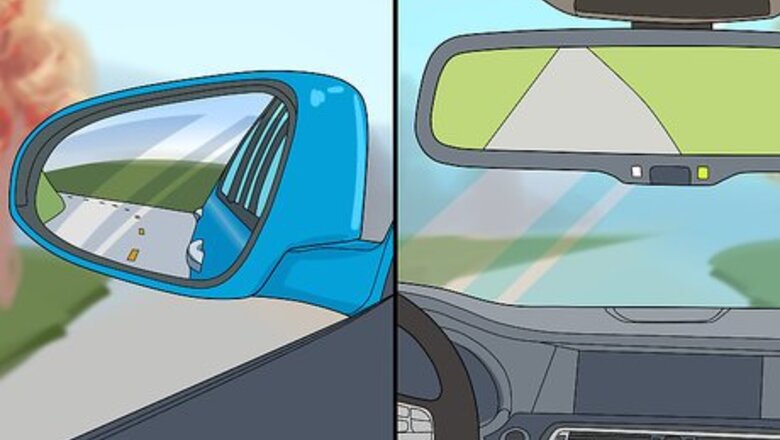
views
Going Into a Tight Turn
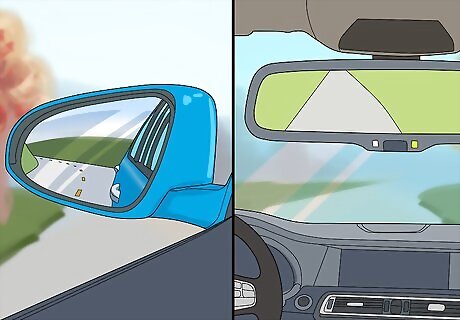
Check all your mirrors to make sure that you’re clear. Before you shift lanes or start to turn, you want to make sure that there’s no one behind you or on the side of you. Check to each side of you and look into your rearview mirrors to make sure that you won’t be crashing into other cars when you turn. When you see that you’re all clear, you can start to take the tight turn. Don’t drive fast if you’re in heavy traffic or you may cause an accident.
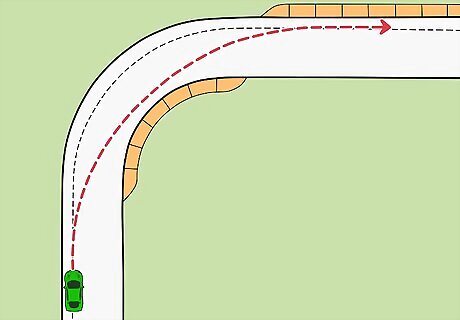
Shift your car to the outermost point in the road. If you are coming to a tight right turn, position your car to as far left as you can go. If you’re making a tight left turn, you’ll want to shift your car to the right. Getting to the outermost point of the road before taking the turn will allow you to take the turn at the widest possible arc.
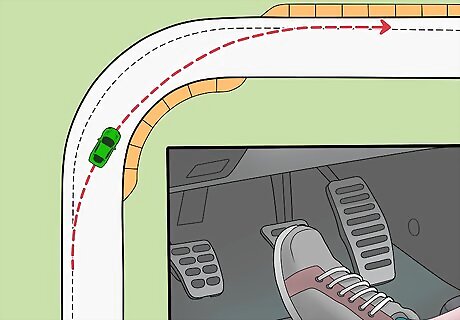
Tap the brakes and slow down as you approach the curve. If you are driving a manual car, downshift as you approach the tight turn. You want to enter the turn at a slow speed and exit the turn at a high acceleration. Keep slowing your car down until you feel like you have full control over it. If you enter a tight turn too quickly you won’t have full control over your vehicle.
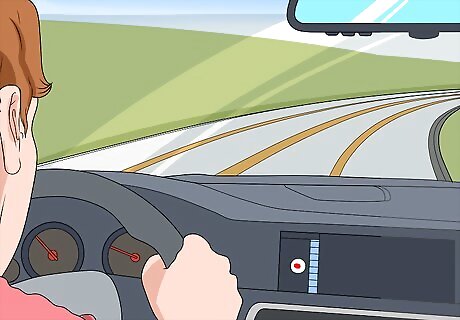
Visualize the widest turn you can take. A wide turn will give you more control over the car and won’t reduce your speed as much as a sharp turn. Look at the road in front of you and visualize taking the turn in the widest possible arc. Even if the turn is a tight one, you should try to take it with the widest arc so you don't lose momentum as you're turning.
Making a Tight Turn
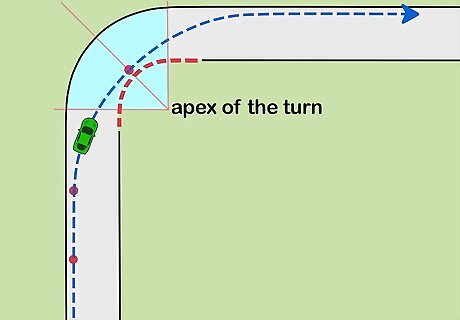
Aim for the apex of the turn. The apex is in the center of the inside corner of a turn. In order to make the widest turn, you’ll want to aim your car so that it drives next to the apex as you're turning. Drive on the outside of the road or track and look at the inside corner of the turn. Plan to drive your car right along side the apex.
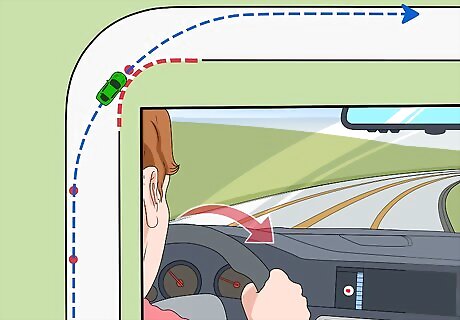
Steer into the curve with a smooth movement. As you start coming up to the corner, start turning your steering wheel in the direction that you want to turn. To drive quickly through the turn, you’ll want to turn your steering wheel as little as possible. Do not jerk the steering wheel or you may spin out.
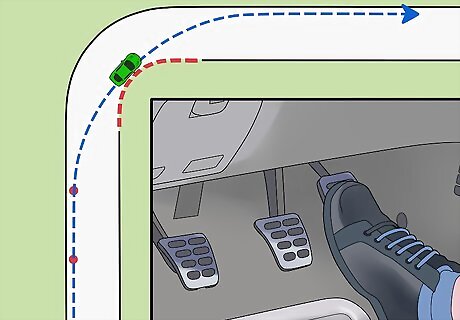
Apply slight pressure to the gas pedal as you turn. As you stabilize the car around the apex of the turn, you can apply gas to the car. As long as you didn’t enter the turn too quickly, you should have slowed up enough so that you can now apply the gas through the rest of the turn. As you hit the gas your tires should feel gripped against the road and you should feel like you have full control over the steering wheel. If you're in a manual transmission you'll have to upshift as you get faster. If you lose control through the turn take your foot off the gas pedal and lightly tap the brake until you regain control of your car.
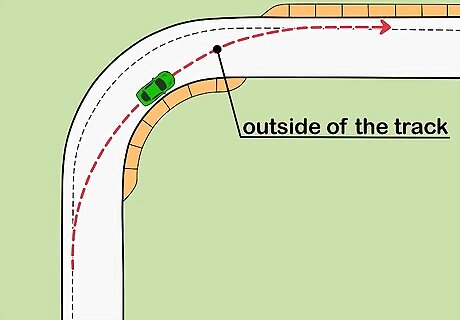
Aim for the outside of the track as you exit the turn. Aiming for the inside of the road as you come out of the turn will make the turn too tight and you’ll lose a lot of speed. Instead, look at the outermost point of the track or road and be ready to drive next to it once you come out of the turn.
Using Your Handbrake

Practice this turn in an open space that's free of obstructions. When you use your handbrake to turn you'll have very little control over how your car turns. This can cause the back of your car to skid out wildly and you can easily go into an embankment or guardrail. Practice this turn in a wide open space until you know what you’re doing.
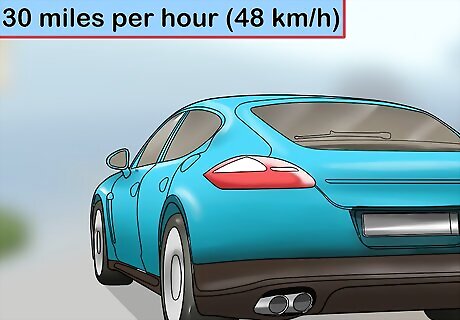
Drive into the turn at a fast speed. To use the handbrake to turn, you’ll need to enter the turn at at least 30 miles per hour (48 km/h). Otherwise, when you pull the handbrake, your car will simply come to a screeching halt. Handbrake turning is easier over a low friction surface like snow, grass, or dirt.
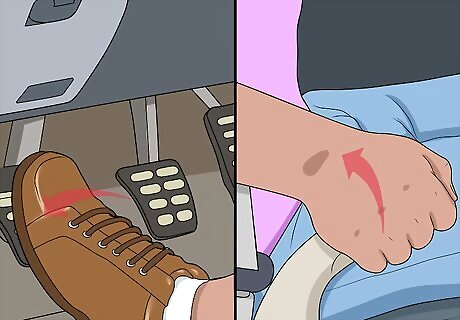
Push down on the clutch while pulling on the handbrake in a manual car. Take your foot completely off the gas while you lift your handbrake. Your hand brake and clutch should only be engaged for 1-2 seconds as you are making the turn. If you have an automatic car, you don’t have to worry about the clutch.
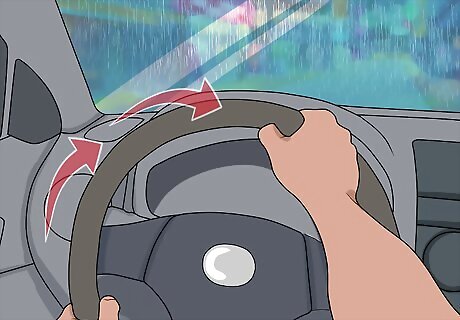
Turn your wheel into the turn. Because you’re engaging the handbrake, you’ll feel a lot of resistance on your steering wheel in the other direction. Quickly turn your wheel slightly in one direction until your back wheels start to skid out. Your tires will start to smoke because of the friction created between the tires and the ground.
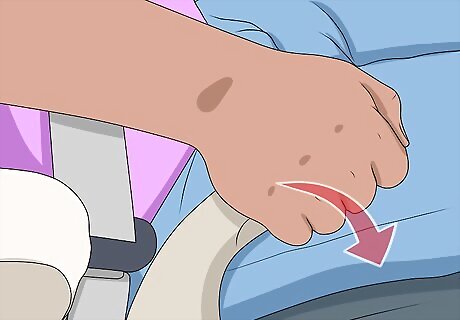
Push your handbrake down and let the wheel spin in the other direction. If you’re using a manual transmission, hit the clutch as you drop the handbrake. If you're in an automatic, you can just push down the handbrake. When your back wheels start skidding, counter steer, or let the wheel spin in the other direction so that you don't overshoot the turn. If you don’t properly counter turn as your wheels skid, you can spin out or potentially flip your car over.
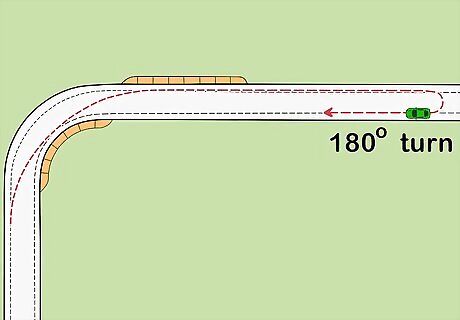
Turn back into the direction of the turn. When you’ve turned enough, you can turn back into the direction of the turn to regain control over your car. Straighten out your car and drive straight. If done correctly, you can make a 180° turn in the matter of seconds.
















Comments
0 comment